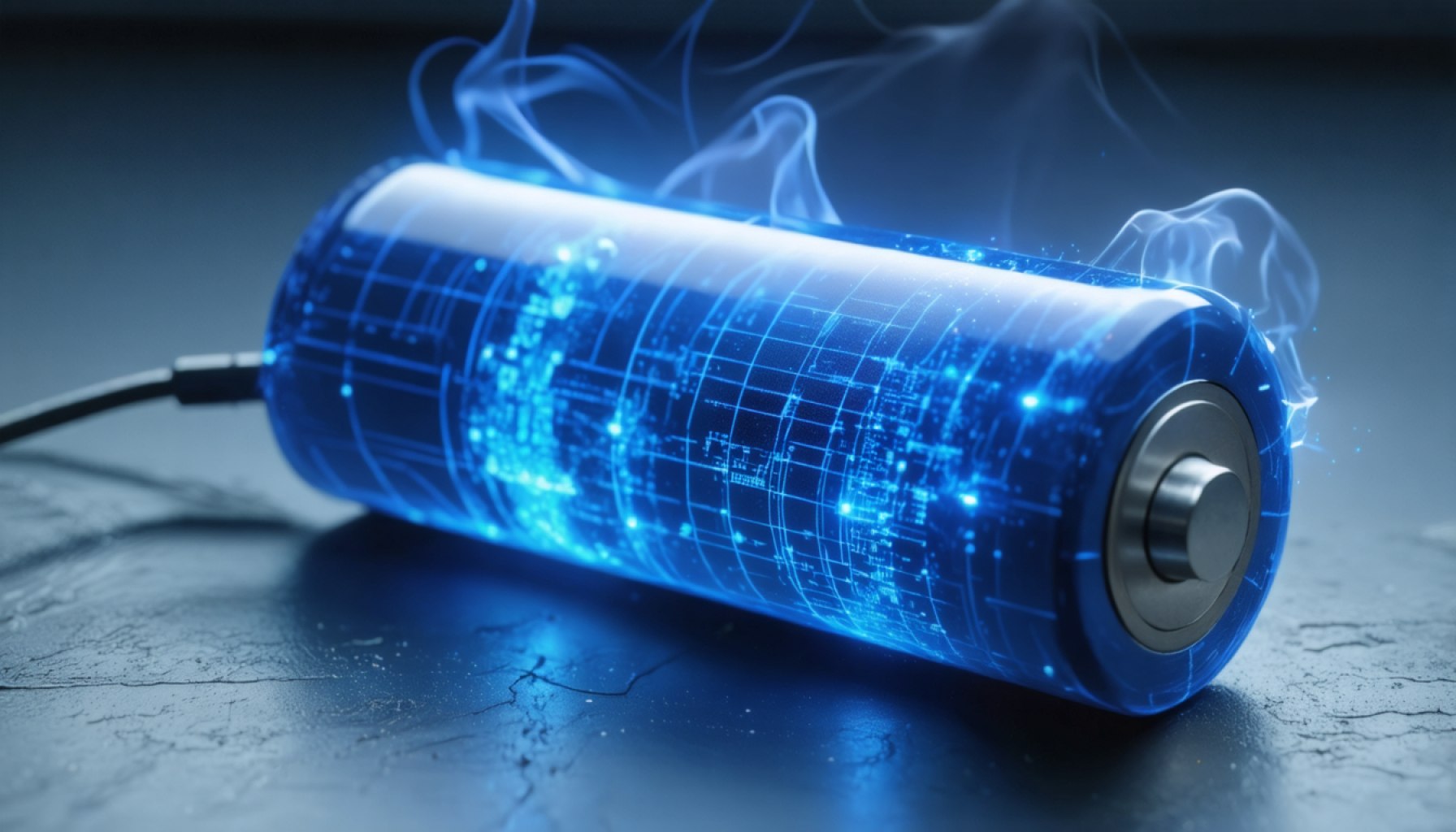- The BV100 battery, developed by Betavolt in China, promises up to 50 years of power without recharging, using Nickel-63.
- Nickel-63’s steady beta decay provides a consistent and reliable energy output, impacting industries like healthcare and aerospace.
- Potential applications include pacemakers and satellites, reducing electronic waste and transforming energy sustainability.
- The battery’s reliance on nuclear materials poses safety, environmental, and regulatory challenges that must be addressed.
- This innovation invites a re-evaluation of energy consumption and the need for sustainable, long-lasting power solutions.
Amid the relentless demand for power from today’s electronic devices, an ingenious innovation from China unveils a future where recharging becomes a distant memory. The BV100 battery, a remarkable creation by the trailblazing company Betavolt, has made waves worldwide with its astonishing promise: a power source harnessing the might of Nickel-63 to perpetuate energy for up to half a century without a recharge. This mini marvel stands to upend entire industries, from healthcare to space exploration, heralding a new chapter in energy technology.
The BV100 isn’t merely confined to the imagination; it’s a tangible asset already in production. A small yet mighty device, the BV100 thrives on the radioactive prowess of Nickel-63, a stable isotope that emits a steady stream of electrons through its beta decay process. This characteristic bestows the battery with a reliable power supply, feeding on a decay process that guarantees consistent energy output. Imagine the implications—a pacemaker that powers life without the need for replacements, space missions stretching over decades unfazed by power shortages, or smartphones that leave the charger behind.
This cutting-edge application brings a freshness to sectors languishing under the limitations of current battery technology. In medicine, freedom from frequent surgeries for battery changes empowers both patients and practitioners. The aerospace sector, too, could soar further than ever before, with satellites voyaging through the cosmos unfettered by the constraints of finite power. Our everyday lives stand to be transformed as well, with devices fostering environmental sustainability by reducing electronic waste.
Yet, despite its allure, the BV100 battery also challenges us with its reliance on nuclear materials—a source of both power and debate. Safety and environmental impacts loom large over its prospects, as does the social responsibility of managing public apprehension and regulatory compliance. Mitigating these concerns is imperative to unlocking the full potential of this nuclear technology.
As China’s innovation steers us towards an era where lengthy battery life is the norm rather than the exception, the broader narrative is one of profound transformation. The promise of longevity without compromise reshapes our perception of energy consumption, urging us to reconsider what enduring power truly means. How the global community will address the intricate balance of benefits and challenges remains a compelling invitation to all—a call to embrace a future powered by durable energy, where the quest for better solutions never rests.
Say Goodbye to Constant Recharging: The Revolutionary BV100 Battery
Introduction
The BV100 battery, developed by the pioneering Chinese company Betavolt, is poised to revolutionize the world of electronics and energy use with its remarkable capability to provide power for up to 50 years without the need for recharging. By harnessing the unique qualities of Nickel-63, this innovation promises to transform industries such as healthcare, space exploration, and consumer electronics.
Technical Overview and Features
Nickel-63 Technology:
Nickel-63 is a radioactive isotope that undergoes beta decay, releasing electrons in the process. This decay is stable and predictable, which makes it an ideal candidate for long-term power sources. According to Betavolt, the BV100 capitalizes on this continuous electron emission to power devices sustainably over several decades.
Features and Advantages:
– Ultra-Long Lifespan: Operates effectively for up to 50 years.
– Consistent Power Supply: Provides a stable and reliable energy output.
– Small and Efficient: Despite its small size, the BV100 can power a wide range of applications without loss of performance over time.
Real-World Use Cases
Medical Devices:
In the medical field, the BV100 is poised to be a game-changer for devices like pacemakers, eliminating the need for frequent surgeries to replace depleted batteries. This not only enhances patient comfort but also reduces healthcare costs.
Space Exploration:
For satellites and space missions, the BV100’s longevity and reliability provide a crucial advantage where battery swaps are not feasible. It can enable longer missions and broader space exploration objectives.
Consumer Electronics:
Imagine smartphones and laptops that could operate for years without recharging. The BV100 promises to reduce electronic waste significantly by extending the lifecycle of these devices.
Challenges and Concerns
Nuclear Safety and Environmental Impact:
The use of radioactive materials, while innovative, raises concerns about safety, environmental impact, and waste disposal. It is crucial for Betavolt and regulators to address these concerns through rigorous testing, transparent safety protocols, and public education.
Public Perception and Regulatory Compliance:
Managing public apprehension about nuclear technology is vital. Ensuring compliance with international safety standards will be essential for widespread adoption.
Industry Trends and Market Forecast
The global battery market is rapidly evolving, and innovations like the BV100 highlight an ongoing shift toward more sustainable and durable power solutions. As demand for long-lasting energy sources grows, investments in nuclear-based battery technology could increase significantly. According to Research and Markets, the battery sector is expected to expand with a compound annual growth rate (CAGR) of over 7% in the next five years.
How-To Steps & Life Hacks
Integrating Long-Life Batteries:
1. Identify Suitable Applications: Determine which industries and devices could benefit the most from extended battery life.
2. Evaluate Safety Requirements: Ensure compliance with safety standards specific to nuclear materials.
3. Implement Usage in Stages: Gradually introduce these batteries to allow for adjustments and improvements based on real-world feedback.
Pros & Cons Overview
Pros:
– Significantly reduces electronic waste.
– Offers unparalleled device reliability and longevity.
– Expands possibilities in harsh environments like space.
Cons:
– High initial investment and production cost.
– Regulatory hurdles due to nuclear material use.
– Requires robust safety protocols to address environmental concerns.
Conclusion and Actionable Recommendations
The BV100 battery represents a thrilling step forward in energy technology. For potential adopters, closely monitoring developments in safety standards and environmental regulations is crucial. Investors and tech leaders should consider supporting research and partnerships that explore further applications of Nickel-63 technology.
Quick Tips:
– Stay informed on regulatory changes affecting nuclear battery adoption.
– Consider pilot programs to test the integration of BV100 in practical scenarios.
– Engage in dialogues with industry stakeholders to address both benefits and concerns transparently.
For more insights into innovations shaping the future, visit Scientific American.













